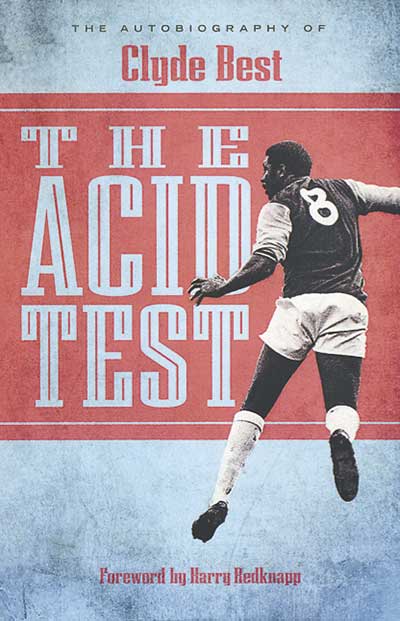
De Coubertin Books, £20
Reviewed by Mark Segal
From WSC 361, March 2017
Buy this book
Clyde Best was a pioneer for black footballers in England and his autobiography traces his journey from the sandy beaches of Bermuda to a 1970s London struggling with industrial strife and a football culture where racism on the terraces was an acceptable way of life.
The incident which gives the book its title refers to a letter Best received before a game warning him that acid would be thrown in his face as he left the tunnel for his next away game. But as an example of a book full of frustrations he forgets, or refuses, to mention who the opposition were set to be.
His journey is certainly remarkable and one that only a person with huge inner strength could have made from the point a 17-year-old Best arrived at a wet, dark Heathrow airport and, due to a mix up, had to make his way to Upton Park having never set foot in a big city before.
Best battled his way from youth team, through the reserves to eventually become a regular in Ron Greenwood’s team at a time when World Cup-winners Bobby Moore and Geoff Hurst were his team-mates, but the early 1970s were not a happy time for the Hammers and Best’s career largely consisted of mid-table finishes.
Yet his significance as a player goes far beyond that and the tributes at the end of the book from the likes of Garth Crooks, Brendon Batson, John Barnes and a host of others prove how important he was to the black players that followed him.
The racism and abuse that accompanied Best from ground to ground provides a theme for the book but apart from the acid incident and where he talks of having to suffer monkey chants, Best doesn’t expand on what he endured, preferring to focus on his efforts on the pitch as he built up strike partnerships with both Hurst and Bryan “Pop” Robson.
For much of the book it is like reading any other footballer’s memoirs, long in detail in some areas, frustratingly short in others. He also has a tendency to go off on a tangent and in the middle of a chapter on a particular season will give his views on the current state of the FA Cup or the huge wages players now earn.
While the main part of the book is about Best’s career at West Ham, he also details his time in the US where he played in the NASL at the height of its popularity and would often come up against greats of the game such as Franz Beckenbauer, Johan Cruyff and, of course, Pelé.
Best’s story is one that needs telling and the dignity and determination with which he faced his abusers is an example to all. It would have been nice to have known more about how Best saw life in London away from football but, a bit like Best himself, the focus is always very much on the pitch.